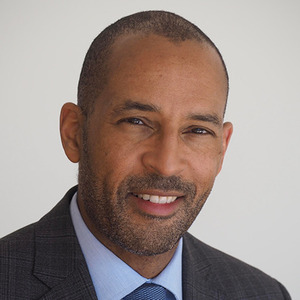Power List

Stephen D. McLeod
Power List Profile
Chief Executive Officer, American Academy of Ophthalmology; Professor and Chair Emeritus, Department of Ophthalmology Francis I. Proctor Foundation, University of California, San Francisco, USA
Why did you decide to pursue ophthalmology/your subspecialty?
It quickly became clear in medical school that ophthalmology was uniquely gratifying amongst medical specialties: for so many of the major causes of visual disability, we actually had a truly effective treatment—from the humble but debilitating refractive error to cataract and beyond. And the intractable problems faced present deeply interesting scientific problems.
As far as cornea goes, the appeal was the melding of the biological and physical sciences with the importance of optics, especially with regards to refractive surgery that also incorporated corneal biomechanics – as well as the fact that along with the phenomenal effectiveness of laser refractive surgery and the visual rehabilitative success of cornea transplant and anterior segment reconstruction, we really can fix so many of our patients’ problems!
Who is someone in ophthalmology/your subspecialty that you feel has been particularly influential over the past 10 years?
One of the first to mind would be Emily Chew who has been a leader in research of the highest quality at the forefront of techniques that translate immediately to the clinical domain. Her work on AREDS has helped us to understand the practical role of genetics in age related macular degeneration and led to the wide adoption of appropriate vitamin supplementation for disease delay. Her research group now leads in machine learning techniques adapted to studying disease risk and progression. She has taken this disease-problem solving philosophy to her role as the inaugural Editor-in-Chief of Ophthalmology Science and is doing a phenomenal job. Emily has personally mentored a generation of first class clinician-scientists who have worked with her at the NEI as medical students and inspired a generation of women ophthalmologists. She has been a profoundly positive influence in our field, and I admire her deeply.
What’s been the biggest breakthrough in ophthalmology/your specific field over the last 10 years?
In cornea, two categorical advances have really transformed the field: firstly, the widespread adoption of endothelial keratoplasty and most recently the emergence of cell-based therapy for endothelial regeneration. Secondly, one cannot overlook the impact of corneal crosslinking on cornea practice: it has completely changed the prognosis of patients at risk for keratoconus progression, the stress of advancing contact lens dependence, and the prevalence and thus risks of transplantation.
Do you have any personal missions for the next 10 years?
To try to facilitate the alignment of the profession of ophthalmology – which includes all of the members of our care delivery team – around a consensus of quality care that evolves on the basis of evidence that we, as a collective community, amass, interrogate, and share. This sort of collective voice will serve us well over the entire range of challenges we face as a profession.
